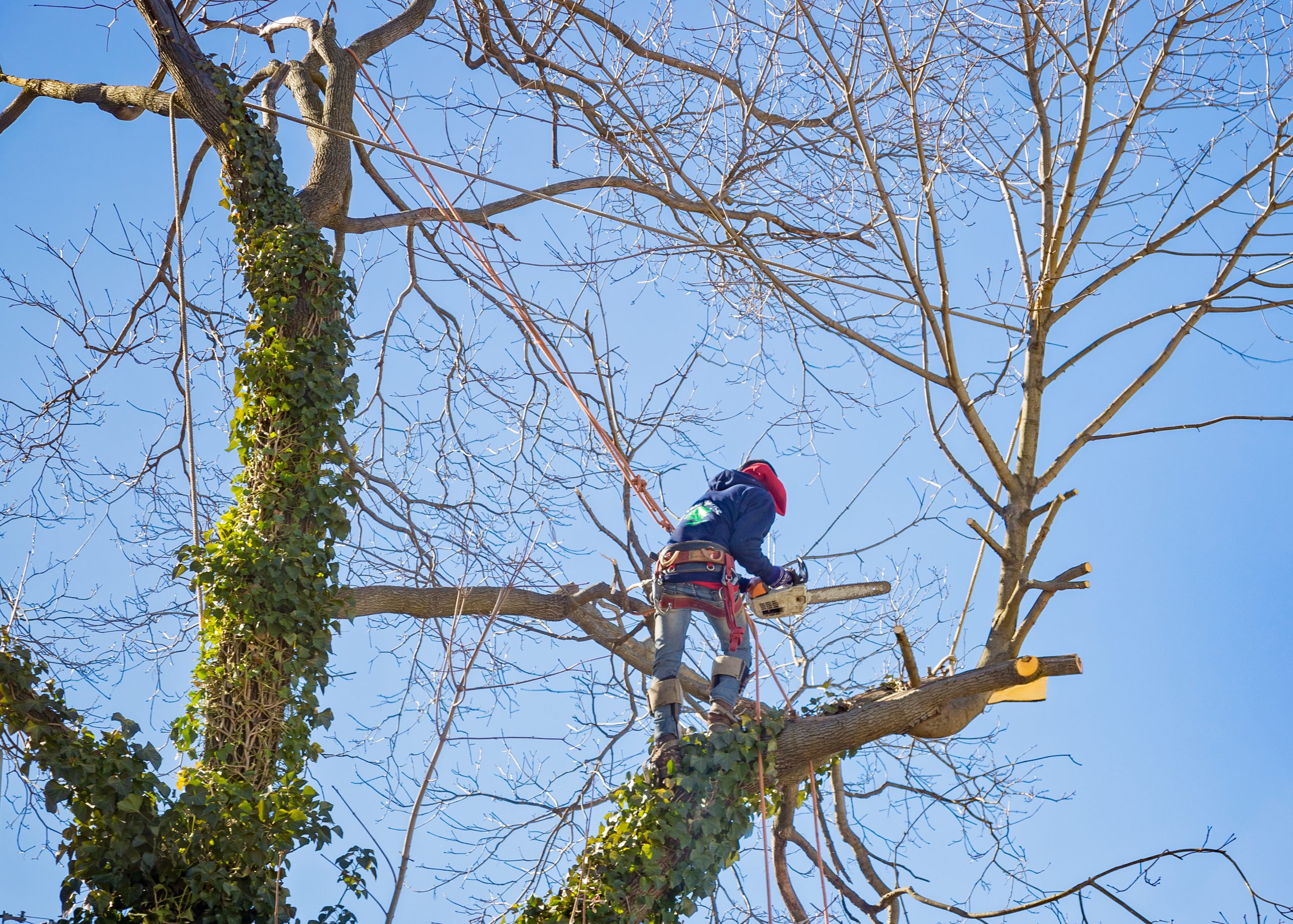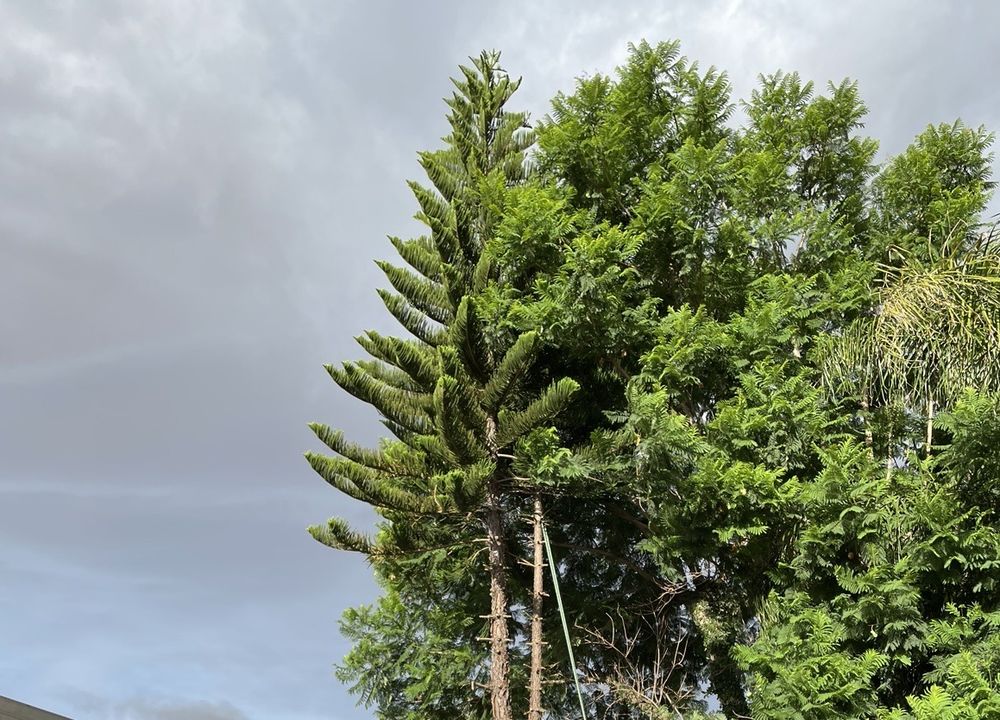For homeowners, maintaining the health and beauty of trees is essential to enhancing the landscape. However, taking care of trees requires more than just occasional watering or pruning. To ensure trees thrive, homeowners must understand their biological growth cycles. These cycles dictate when trees are most vulnerable and when they require specific care to promote growth, health, and overall vitality.
In California, where the climate is Mediterranean, with wet winters and dry summers, trees follow unique growth patterns that can differ significantly from regions with harsher winters or more consistent rainfall. Understanding these cycles helps homeowners provide better care for their trees, addressing seasonal needs like watering, fertilization, pruning, and pest control. This article will explore the biological growth cycles of trees, explain how climate influences growth, and outline seasonal maintenance tasks for homeowners to follow to ensure healthy trees throughout the year.
The Biological Growth Cycles of Trees
Understanding the life cycle of trees is fundamental to effective tree care. Trees undergo several distinct stages of growth, which are influenced by their internal biological rhythms, as well as external environmental factors like temperature, sunlight, and water availability.
1. Bud Break (Spring)
The growth cycle of most trees begins in early spring when they break dormancy. As temperatures warm up, trees “wake up” from their winter rest, and new buds begin to form. This period, known as bud break, marks the start of the growing season. Leaves emerge, flowers bloom, and trees begin to take in more nutrients and water to fuel their new growth.
- Key Tree Activity: Trees start producing sap, opening buds, and sprouting new leaves or flowers.
- Growth Characteristics: During this phase, trees focus on expanding their leaves and branches. They use sunlight for photosynthesis to produce energy for more growth.
2. Active Growth (Late Spring to Summer)
Once the tree breaks dormancy, it enters the active growth phase. This is the period when trees are most productive, growing rapidly as the weather warms. Depending on the species, trees may grow taller, develop thicker canopies, or produce fruit.
- Key Tree Activity: Trees focus on expanding their canopy, producing flowers, and growing fruit.
- Growth Characteristics: Nutrient uptake is at its peak during this time. Photosynthesis is most efficient, and trees will require abundant water to support their active growth. The root system will also expand to support this new growth.
3. Late Growth/Pre-Dormancy (Fall)
As the days shorten and temperatures cool, trees enter the pre-dormancy phase. This is when trees begin to prepare for winter. The leaves may begin to change color and eventually fall off, while the tree starts conserving energy and water.
- Key Tree Activity: The tree conserves energy, stops growing, and prepares for dormancy.
- Growth Characteristics: Trees reduce their metabolic processes and focus on storing resources in the roots. Fruit-bearing trees begin to produce seeds or fruits that are ready for harvest. Trees that lose their leaves may begin the process of leaf senescence (dying off of leaves).
4. Dormancy (Winter)
During the dormant phase, trees essentially “hibernate.” The leaves have fallen, and trees stop growing altogether. This period of rest is crucial for trees as it allows them to conserve energy and prepare for the upcoming spring growth cycle.
- Key Tree Activity: Minimal activity is occurring above ground. Roots may continue to absorb moisture, but the tree is not producing new leaves or flowers.
- Growth Characteristics: The tree enters a state of dormancy where metabolic processes slow down, reducing the tree’s need for water and nutrients. Some evergreen trees may still maintain foliage, but many deciduous trees will shed their leaves completely.
Climate and Local Conditions Influence Tree Growth
California’s Mediterranean climate, characterized by mild, wet winters and hot, dry summers, has a significant impact on the growth cycles of trees. The seasonal shift between wet and dry periods means that trees in California must adapt to different moisture levels throughout the year, which influences when they grow and when they enter dormancy.
1. Temperature
California’s warm spring and summer temperatures trigger the onset of bud break and active growth. Trees in areas with more moderate temperatures may start their growth cycle earlier in the spring, while those in cooler areas may experience a delayed bud break. Heatwaves during summer can accelerate the drying of soil, leading to increased water demand from trees. Additionally, some trees may go dormant earlier than usual if the temperatures drop more than expected in the fall.
2. Rainfall Patterns
The region’s wet winters provide an essential source of water during the dormant period, replenishing soil moisture that trees will use in the following growing season. Trees in areas with regular rainfall have more consistent growth cycles, whereas those in drier areas may experience more pronounced periods of drought, affecting their growth and health.
3. Water Availability
Water is a major factor in tree growth, especially in California, where drought is a recurring issue. Trees need ample water during their active growth phase, and any shortage during this time can lead to stunted growth, leaf scorch, and reduced fruit production. Trees are also more susceptible to disease and pests when stressed by drought conditions.

Maintenance Tasks Aligned with Tree Growth Cycles
Proper tree maintenance aligns with the natural growth cycle of the tree. By understanding when to carry out specific tasks, homeowners can ensure their trees stay healthy and strong throughout the year. Here’s a breakdown of essential maintenance tasks by season:
Spring: Active Growth Phase
- Fertilization: Early spring is the best time to fertilize trees. This supports the new growth and encourages healthy leaf and root development. Use a balanced fertilizer with micronutrients to ensure the tree has the necessary elements to thrive.
- Watering: As trees emerge from dormancy, they require adequate moisture to fuel growth. Be sure to water trees deeply to encourage deep root growth. In California, a long dry season may require homeowners to water more frequently, especially during late spring.
- Pest Control: Spring is the time when pests like aphids, caterpillars, and scale insects become active. Inspect trees for early signs of infestations and use appropriate measures such as horticultural oils or natural predators to keep pests in check.
- Mulching: Apply mulch around the base of the tree to conserve moisture and prevent weeds from competing with your tree for nutrients.
Summer: Peak Growth Phase
- Pruning: Pruning during the summer should focus on removing any dead or damaged wood that could hinder new growth. Light pruning of overgrown branches may also help improve the tree’s structure and air circulation. However, avoid heavy pruning during peak summer heat, as it can stress the tree.
- Monitoring for Pests and Diseases: In the hot summer months, pests and diseases are at their peak. Regularly inspect trees for signs of damage, such as discolored leaves or holes in the bark, which could indicate pest activity. Use organic insecticides or call a professional arborist if an infestation is severe.
- Irrigation: During the summer heat, ensure trees receive enough water. Deep watering is essential to encourage deep root growth. Consider using drip irrigation systems or soaker hoses to ensure consistent moisture throughout the growing season.
Fall: Pre-Dormancy Phase
- Preparing Trees for Winter: As the temperatures begin to cool, reduce the frequency of watering. Trees still need some moisture to support their root systems, but overwatering can lead to root rot.
- Pruning: Fall is a great time for light pruning. Remove any damaged or diseased branches before they can become a problem during the winter. This also reduces the risk of breakage during storms.
- Fertilization: Avoid fertilizing trees in late fall. Fertilizing too late can stimulate new growth that could be damaged by the first frost.
Winter: Dormant Phase
- Pruning: Winter is the ideal time for major pruning tasks. As trees are dormant, pruning during this time won’t disrupt their growth cycle. Remove any dead, diseased, or crossing branches to improve the tree’s structure and health.
- Winterizing: If you live in an area where temperatures drop significantly, consider wrapping young trees with burlap or protective covers to shield them from extreme cold.
- Watering: While trees are dormant, they still require some water, particularly during dry spells. Deep watering is key during this time, but it should be spaced out, as trees do not require as much moisture during their dormant period.
Seasonal Issues for Tree Care in California
1. Pest Control
California’s mild climate means that pests are active almost year-round. Insects such as aphids, caterpillars, and scale can damage trees during both the spring and summer months. Regularly inspecting trees for pests and using organic or chemical treatments when necessary will help ensure your trees remain healthy.
2. Disease Prevention
Fungal infections, like powdery mildew, can thrive in the warm, wet conditions of spring. As trees leaf out, it’s crucial to monitor for signs of disease. Use organic fungicides or copper-based treatments as a preventative measure. Trees that are stressed, either due to drought or poor nutrition, are more susceptible to disease, so ensure proper care throughout the year.
3. Drought Management
Drought is an ongoing concern in California, and it can significantly impact tree growth and health. During dry spells, homeowners should ensure their trees receive deep watering, especially during the growing season. Using mulch, which helps retain moisture, can also reduce water stress. Consider choosing drought-tolerant tree species if water conservation is a concern.
Conclusion
Understanding tree growth cycles is the key to effective tree care. By aligning tree maintenance tasks with the natural cycles of bud break, active growth, dormancy, and the pre-dormancy phase, homeowners can ensure their trees remain healthy and strong year-round. By focusing on specific seasonal needs, such as watering, fertilization, pruning, and pest control, homeowners can help their trees thrive in California’s unique climate.
Tree care isn’t a one-size-fits-all approach. Each tree species has its own growth patterns and care requirements, so learning about the specific needs of your trees can make all the difference in maintaining a vibrant landscape. By staying proactive and attentive to your trees’ needs at each stage of their growth cycle, you can enjoy a lush, healthy landscape for years to come.
Enhance Your Landscape with JC Tree Service’s Expert Tree Maintenance
Proper tree maintenance is essential for keeping your property safe, beautiful, and well-cared-for. At JC Tree Service, we specialize in comprehensive tree maintenance services for homes and businesses in Brentwood, Antioch, and surrounding areas. Whether you need seasonal pruning, risk assessment, or help managing overgrown branches, our skilled team is here to ensure your trees stay healthy and safe year-round.
Our tree maintenance services are designed to prevent potential hazards, protect your property, and enhance curb appeal. With regular maintenance, we help you avoid risks from weak or damaged branches, manage tree growth, and support long-term health for a vibrant landscape. JC Tree Service focuses on eco-friendly practices, delivering solutions tailored to your needs while keeping your landscape organized and manageable.
Don’t let neglected trees jeopardize your property’s safety and beauty. Contact JC Tree Service today for a free, no-obligation quote on our professional tree maintenance services. Discover how expert care can transform your outdoor space!
Disclaimer
The materials available on this website are for informational and entertainment purposes only and not to provide legal or professional advice. You should contact your attorney or home improvement specialist to obtain advice concerning any particular issue or problem. You should not act or refrain from acting based on any content included in this site without seeking legal or other professional advice. The information presented on this website may not reflect the most current home improvement developments. No action should be taken in reliance on the information on this website. We disclaim all liability concerning actions taken or not taken based on any or all of the contents of this site to the fullest extent permitted by law.


